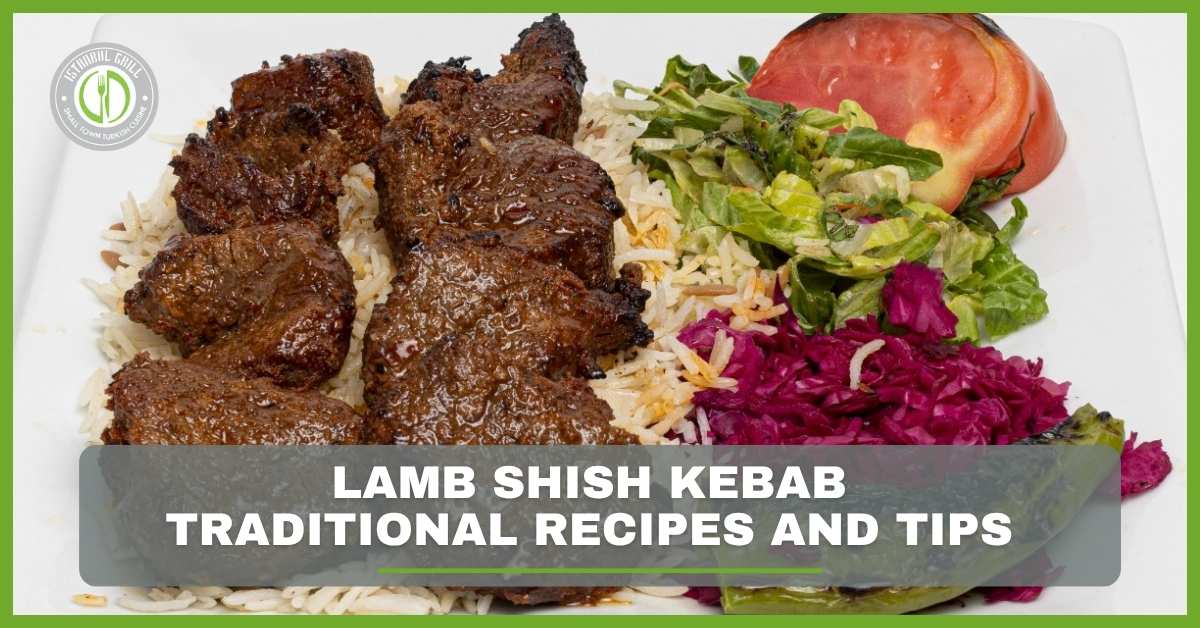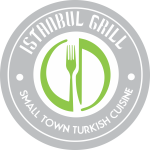Turkey sits at the crossroads of Europe and Asia. This makes its cuisine very diverse. Many know Turkish cuisine for its kebabs and Pastries. But, few have Turkish seafood dishes explored its seafood dishes. This country has many types of fish. Turkey’s coastline is over 8,000 km long along the Aegean, Mediterranean, and Black Sea. So the government has an abundance of seafood. Seafood is vital to the Turkish kitchen. It spans from the roaring fish bazaars of Istanbul to the fishermen’s houses on the Aegean shores. To satisfy your craving for Turkish seafood, let’s take a culinary tour of Turkey. We’ll taste its 20 most delicious seafood dishes, each with a story to tell.
The culinary samples from the coastal regions of Turkey are about seafood.
Fish and seafood dominate meals in Turkey’s coastal Aegean cities. Fresh vegetables accompany these dishes, particularly in Mediterranean coastal towns. Fishermen go out daily to catch fish and seafood in these coastal areas. They sell their catch to households and restaurants. Thus, seafood is an important Turkish seafood dish. Residents of these regions eat Mediterranean diets. These diets have many vegetables, olive oil, and simple recipes. Turkish seafood is a sumptuous experience. It offers many dishes and a strong culture behind its delicious preparations.
1. Balık Ekmek (Fish Sandwich)
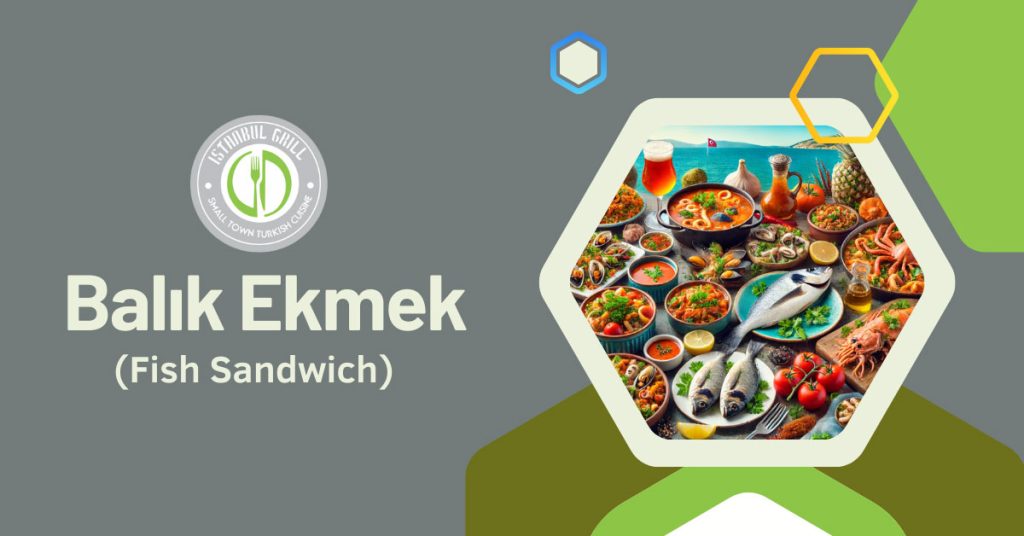
Any discussion on seafood in Turkey must include Balık Ekmek. It’s a street food native to Istanbul. Balık Ekmek means “fish in bread.” It’s a fish sandwich. It has grilled mackerel, onions, lettuce, and lemon, all on bread. It is a mobile snack. Both Istanbul’s locals and Turkish seafood dishes visitors can enjoy while walking along the Bosphorus. Balık Ekmek dates back to Istanbul’s fishermen. They would barbecue fresh fish on their boats and sell it to pedestrians. Today it has preserved its status as a unique dish adored by everyone who invites friends to Turkey.
2. Lüfer (Blaufisch)
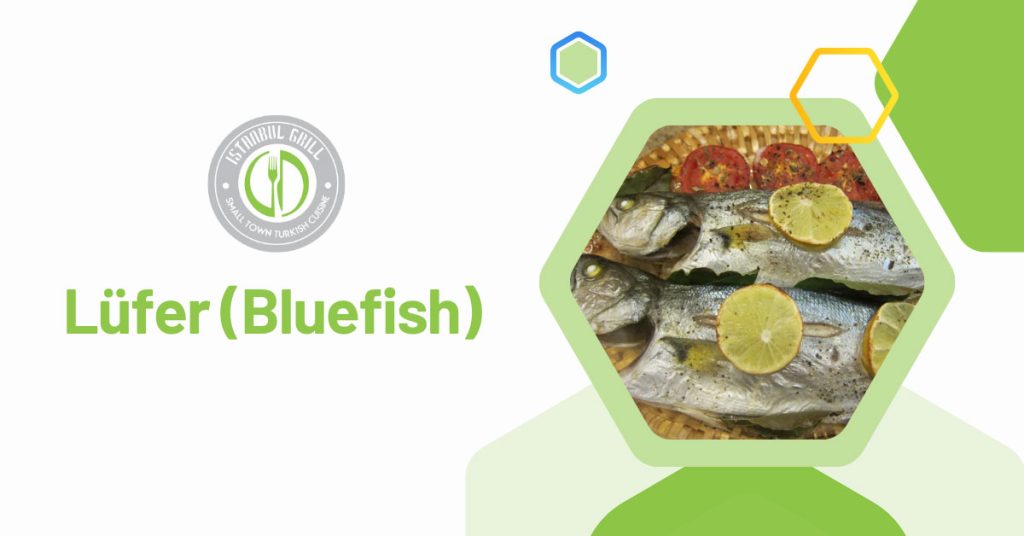
Turkish seafood lovers prize Lüfer, also known as bluefish in English. Lüfer is a delicacy for its delicious taste and soft meat. It is especially prized in the Bosphorus area. People usually grill this fish. The server places the dish whole Turkish seafood dishes on a plate, along with a fresh salad and lemon halves. Fish-forward flavor emphasis streamlines preparation. Lüfer is special in Turkey. There are many festivals for this fish as it is part of Turkey’s culinary tradition.
3. Levrek (Sea Bass)
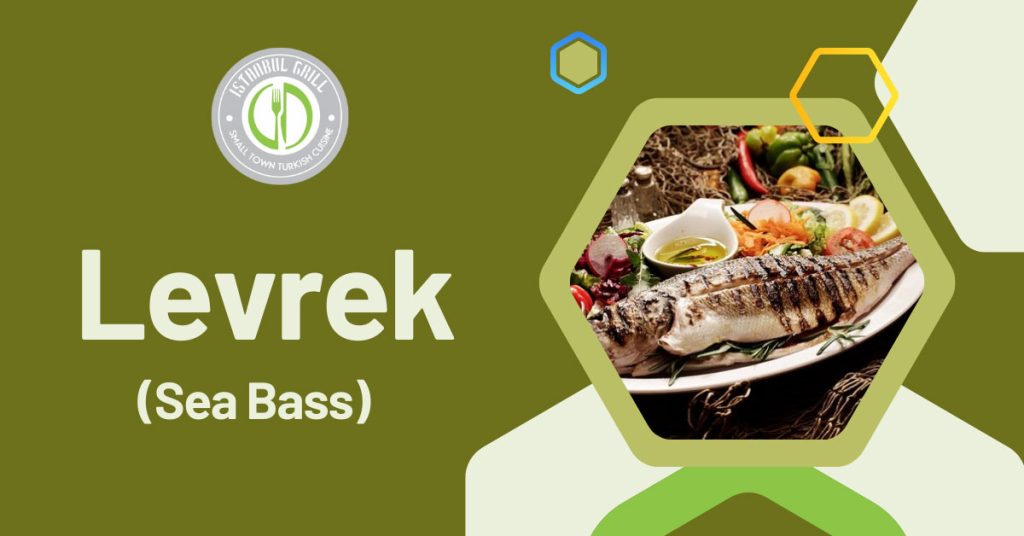
Turkey commonly eats Levrek, a type of sea bass. It is a tasty fish with a mild flavor and a firm texture. It’s a type of fish. You can fry, barbecue, oven bake, or serve it raw as sushi, for example, in a new Turkish style. They convert Levrek into Levrek Izgara, a beloved regional culinary staple. It’s a Turkish seafood dish. Soak the Levrek in olive oil, lemon, and some Turkish seafood dishes turmeric, then grill it over a high flame. You can serve this dish with meze on the side. They are simple appetizers, great for sharing.
4. Çipura (Gilt-head Bream)

The Çipura, or gilt-head bream, is popular in Turkey for its sweet, tender meat. Whole, it is usually grilled with a hint of seasoning that includes oil, salt, and pepper. Çipura, a Turkish dish, is often served with steamed veggies and a splash of lemon juice. It brings a purist’s taste to the table. It is a very common dish. Most people, locals, and tourists, eat it in coastal region restaurants.
5. Hamsi (anchovies)
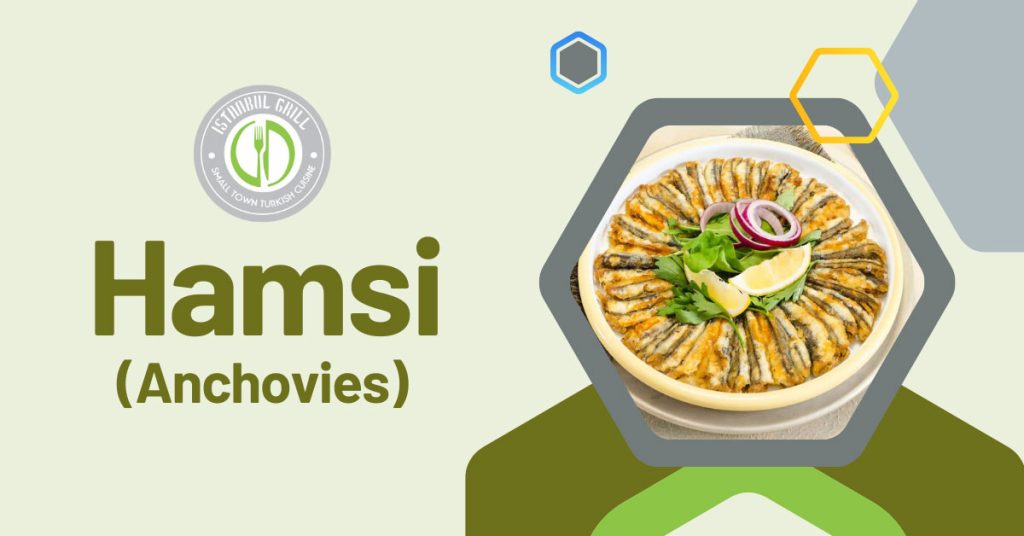
The hamsa, known as the anchovy abroad, symbolizes a fish in Turkey. It also represents its culture. The Black Sea’s own Hamsi is small in size, big in flavor, and is especially loved in the Black Sea region. There are many ways to cook Hamsi. They include Hamsi Tava, pan-fried anchovies, and Hamsili Pilav, an anchovy pilaf. The latter is a specific specialty. In Turkish seafood dishes, chefs layer anchovies on top of rice, onions, and spices to prepare it. Turkish seafood dishes then, bake it until it is tender. Some derived foods are popular during this period. Hamsi are popular in the season from November to March. People rush to fish markets to buy fresh fish.
6. Kalamar Tava (Fried Calamari)
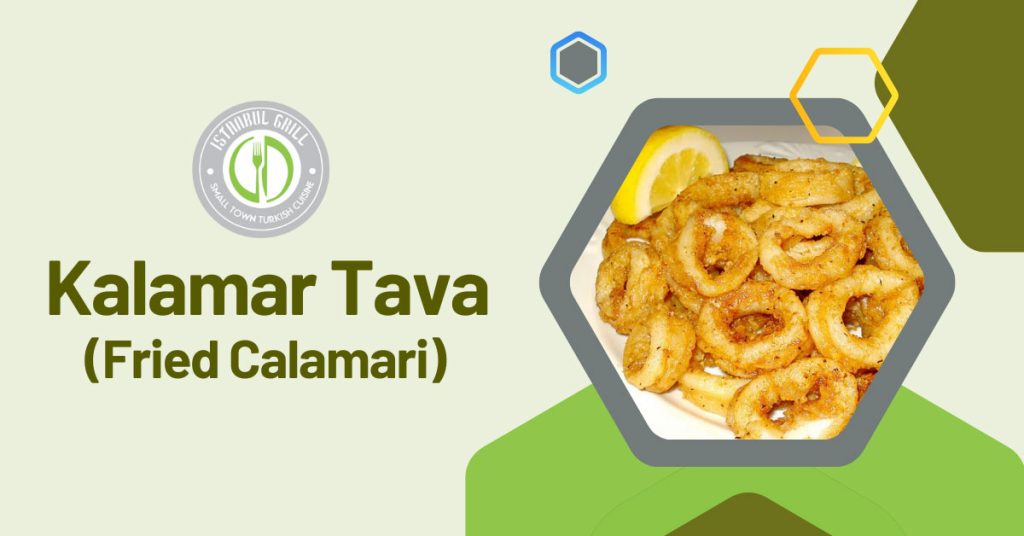
Fried squid, or Kalamar Tava, is a top meze in Turkey. You can find it in almost all seafood restaurants. A light flour coating breads the calamari rings. They are deep-fried until crisp and brown. They come with a lemon slice and a dish of tarator sauce. It’s a yogurt-based sauce with garlic and crushed walnuts. In Turkey, people serve this dish with a glass of rakı, anise-flavored alcohol, because it is so popular.
7. Midye Dolma (Stuffed Mussels)
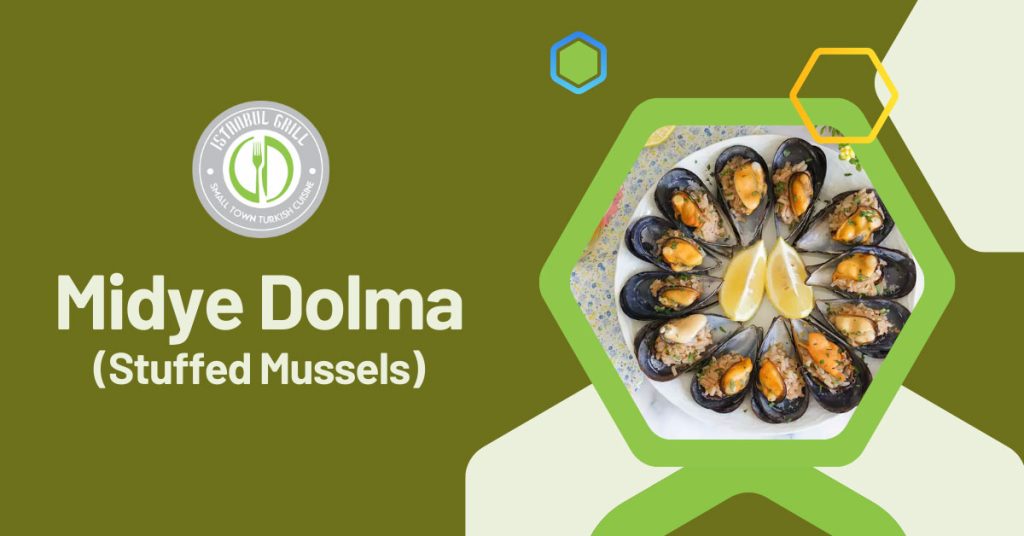
Midye Dolma is a Turkish street food. It is a seafood dish for customers who want a twist on traditional food. These mussels, a snack, are popular in Istanbul. We open mussels and fill them with seasoned rice. It has pine nuts, dried currants, and spices. They then steam them. Every dish is a burst of flavor. It balances the tang of dried currants with spicy spices. People often eat Midye Dolma cold. But adding lemon juice to the mix enhances its taste.
8. Karides Güveç (Shrimp Casserole)
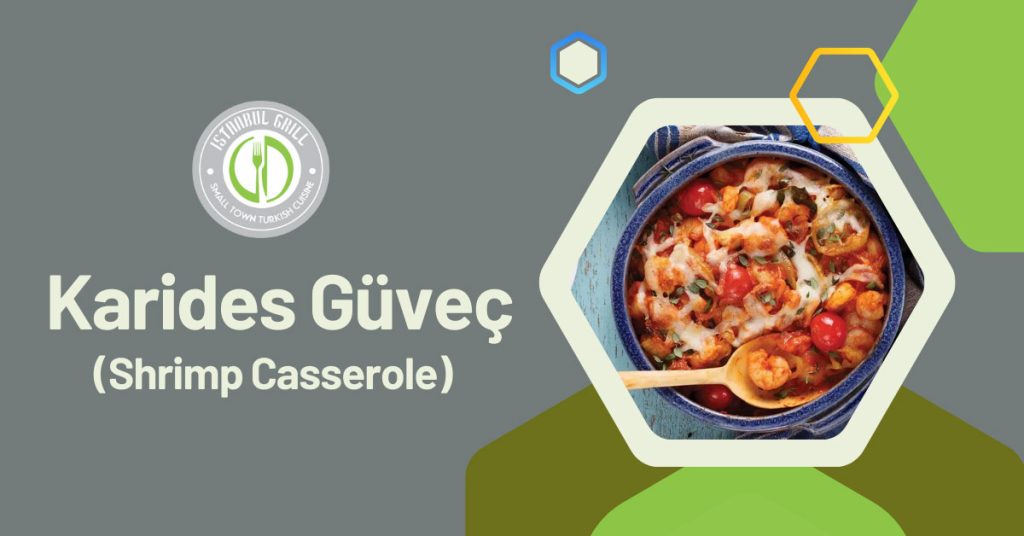
Karides Güveç is a rich, hearty shrimp casserole. It’s a must-try for seafood lovers. This dish originated from cooking in a clay pot called güveç. It stews and bastes the food. This preserves the juices and concentrates the flavor. Stir-fried frozen shrimp with tomatoes, green peppers, garlic, and chili. Then, bake until crispy. Therefore, you can serve Karides Güveç with rice, potatoes, or any starchy food. You can also use fresh bread to soak up the delicious sauce.
9. İstavrit (Horse Mackerel)
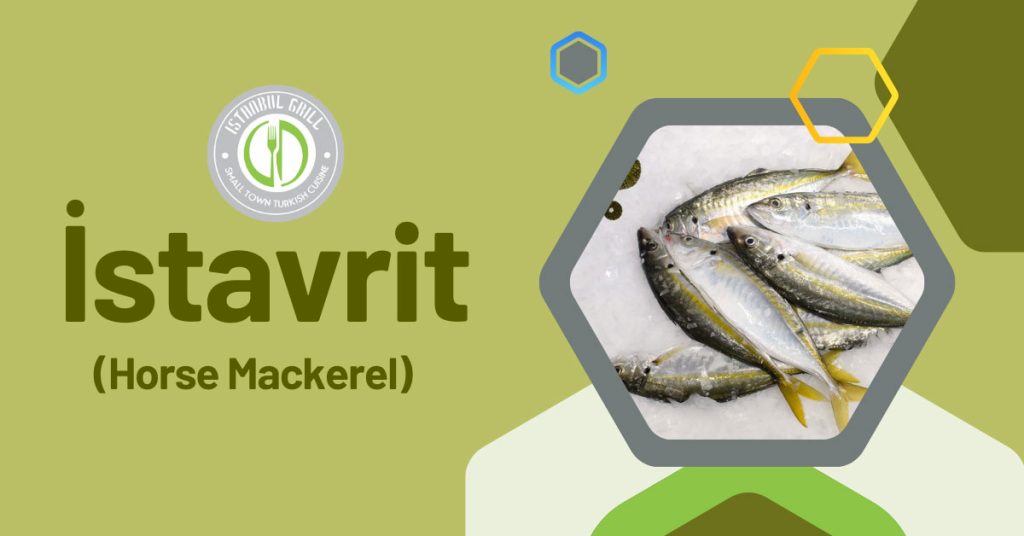
İstavrit, or horse mackerel, is abundant in the Turkish Sea. It is a very ignored seafood compared to more luxurious types. However, those who like a dense and special taste like İstavrit. The best and most preferred way to cook İstavrit is to pan-fry it. This method best enhances the fish. It is usually accompanied by a roka (arugula) salad and a slice of lemon on the side. İstavrit, often overlooked for its simplicity, is a common fixture in Turkish homes.
10. Barbunya (Red Mullet)
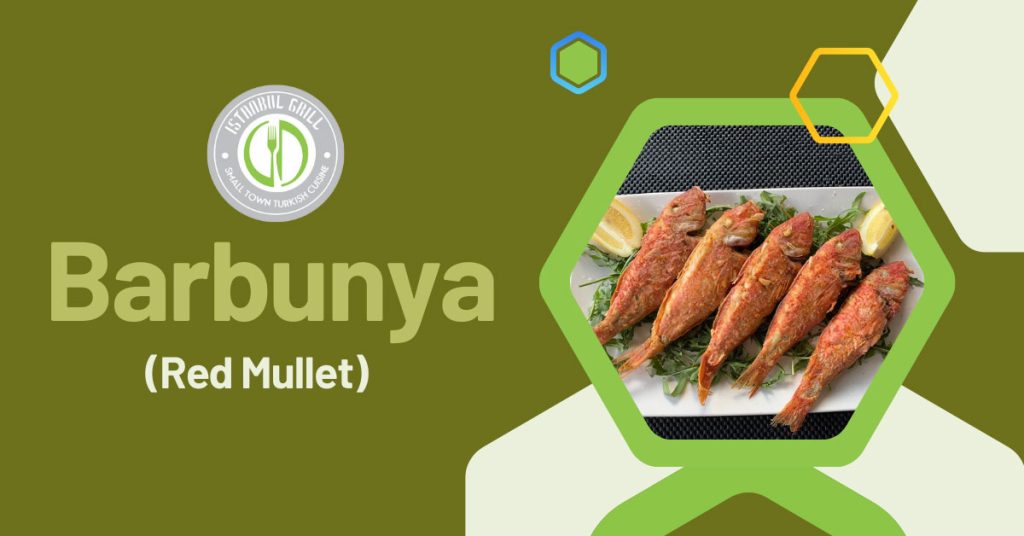
Barbunya is a red mullet, a small fish with juicy aromatic flesh and beautiful red outer skin. This is often barbecued whole, best accompanied by a sprinkle of olive oil and a squeeze of lemon juice. In Turkey, people use Barbunya to make Barbunya Pilaki. A mixture of tomatoes, onions, garlic, and oil that poaches the fish. This dish is usually eaten cold. It is part of the meze, the Greek version of Spanish tapas. It is popular for its intense, sour, and sharp taste.
11. Sinarit (Dentex)

Sinarit, or dentex, is one of the most prized fish in Turkish cuisine. Dry, tasteless meat is highly valued. It is usually seasoned with salt and grilled or baked. So, it rarely takes on any other flavor. Sinarit is from the Aegean region. The dish comes with a side of Ege otları, wild greens, and lemon juice. This dish is another example of Oriental cuisine. It is Turkish seafood. It does not use complex combinations to enhance its flavors.
12. Kalkan (turbot)
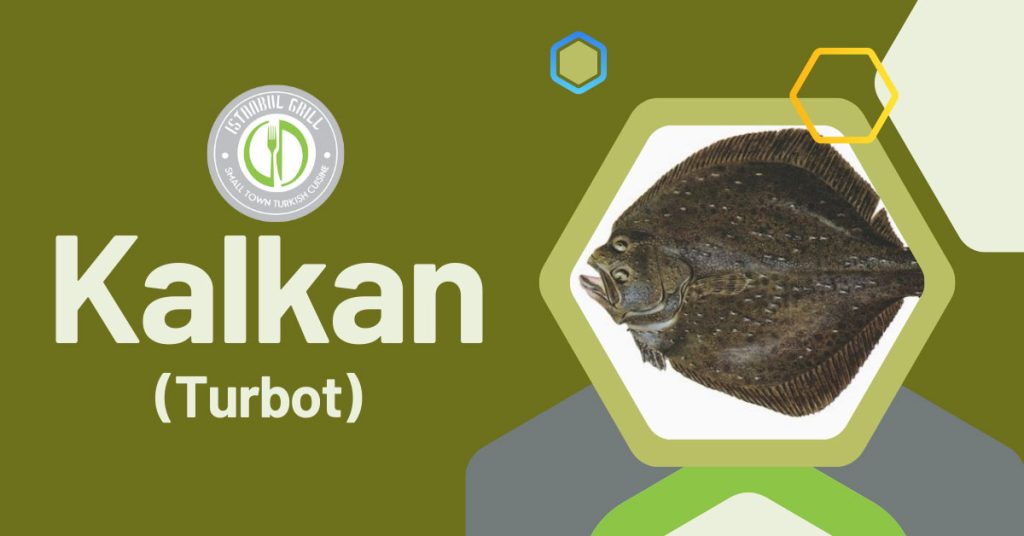
Located in the family of flatfish, kalakan, also known as turbot, has a rather subtle taste and a rather rich, buttery flavor. In Turkey, Kalkan is mostly eaten grilled. It’s called Kalkan Izgara. They grill the fish whole and serve it with a salad, and a lemon wedge. The taste of the fish is tender, and it tastes great when mixed with the smoky flavor coming from the grill; therefore, any traveler who is interested in Turkish seafood should not miss the opportunity to order this particular dish.
13. Ahtapot Salatası (Ahtapot Salatası)
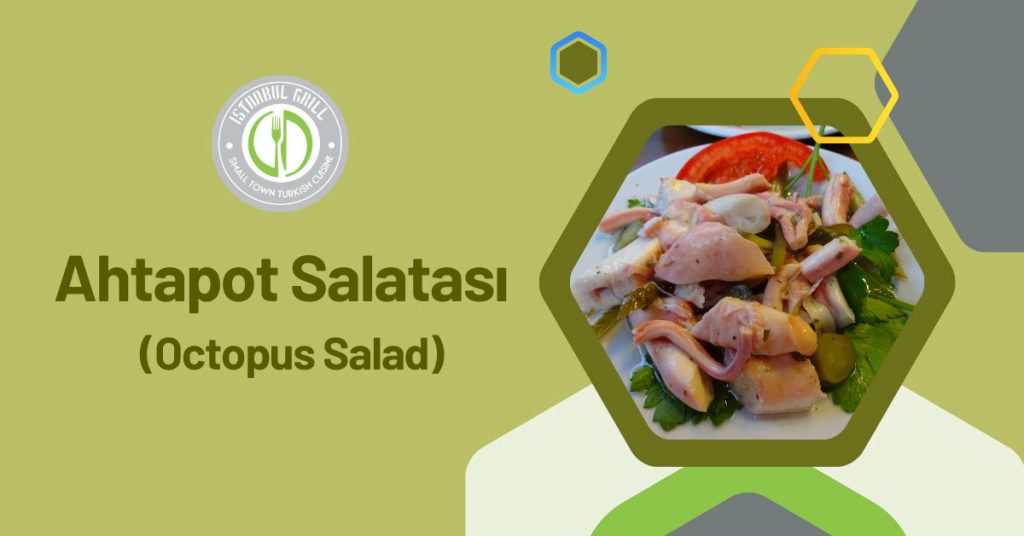
Ahtapot Salatası is an exciting cold and lightweight dish that would be ideal for a hot summer week. The octopus has to be boiled gently in water, and once it is cooked through, the meat is then cut across and combined with olive oil, lemon juice, garlic, and herbs. This salad is generally part of the meze platter and is cherished for having a deliciously soft texture and some tangy notes of oranges. This makes it perfect since it showcases how versatile octopus is in the Indonesian food listing.
14. Balık Çorbası (Fish Soup)

Balık Çorbası, fish soup, is a simple and healthy soup that is highly preferred all over Turkey. A traditional soup can be prepared with any fish; you might use levrek (sea bass) or çipura (gilt-head bream); the use of carrots, potatoes, and celery remains compulsory. This soup has the deepest aroma that comes from the bay leaves and lemon juice combined with a small splash of white wine, and the broth makes an extraordinary dinner for those cold evenings. This soup is traditionally eaten with a piece of bread; the crust must indicate that the soup is quite filling.
15. Palamut (Bonito)
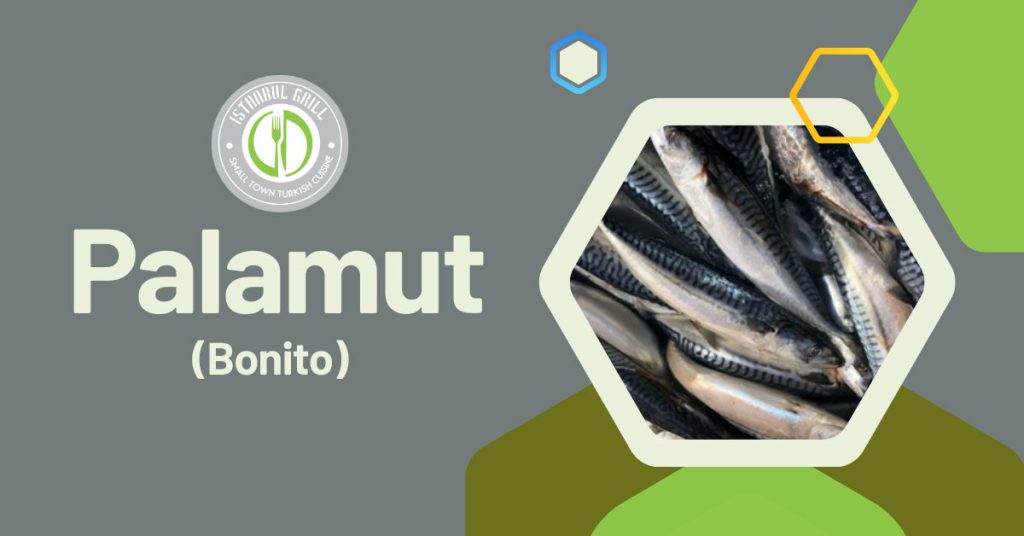
People in Turkey dominantly prefer Palamut or bonito type of fish mainly during the autumn season. They best prepare this on the grill or in the oven because of the rather dense structure and intense taste. Among the most popular methods of cooking Palamut is the Palamut Izgara, which they cook after marinating it in olive oil with some lemon juice. Another specialty dish is the Palamut Pilaki, the baked fish cooked with tomatoes, onions, garlic, and potatoes. Palamut, delicious and with many side dishes, is one of the most popular Turkish seafood products.
16. Lakerda (Cured Bonito)
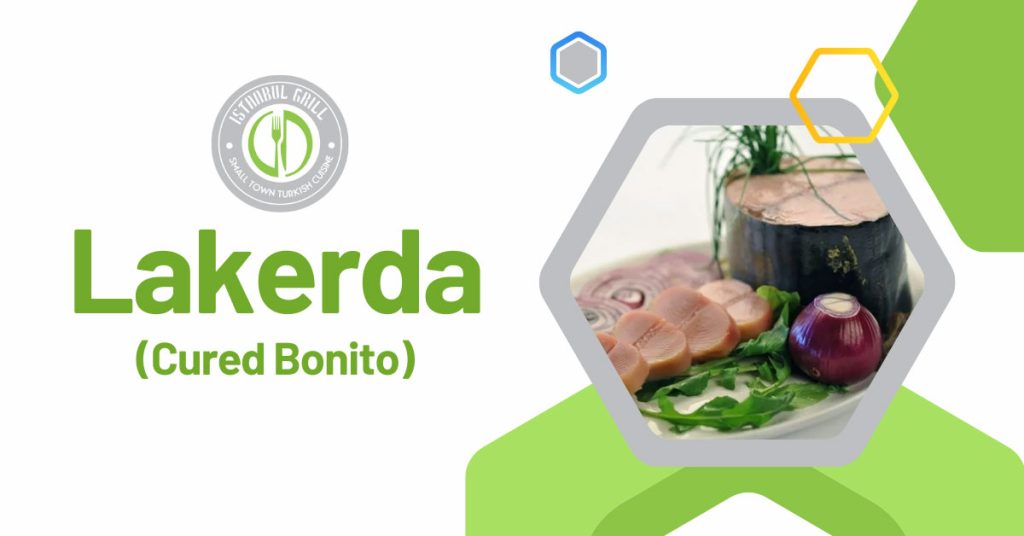
Here go Bulgarice and curry rice, while Lakerda is one of the most popular Turkish dishes prepared from cured bonito. The chef prepares Lakerda by slicing bonito, placing it in salt water, and then leaving it to cure for several days. They prepare and cook it, enjoining it with thinly sliced Turkish seafood dishes and onions and topping it with olive oil to complete the tasty fish, which diners partly take as a meze food. Lakerda is a tasty fish that has a firm, big-flavored taste that complements the sweetness of the onions and is therefore considered a classic of Turkish cuisine.
17. Sardalya (Sardines)
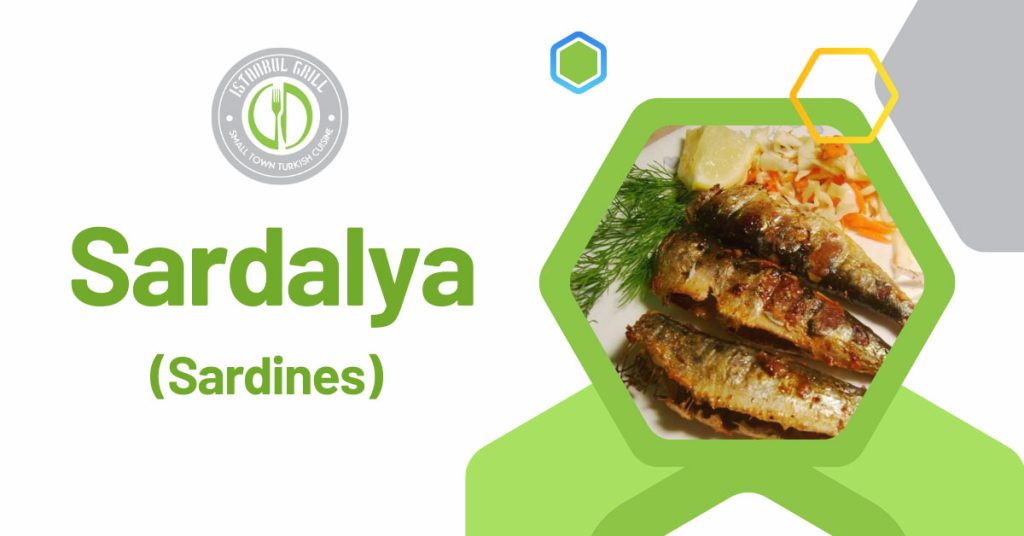
Sardalya is the term used for sardines; it refers to small oily fish popular and frequently eaten in Turkey and found in its sea. Sardines are usually grilled whole and accompanied by Ege otları (wild greens of Aegean) with a lemon slice. In Turkey, they can also be prepared as Sardalya Tava, where the fish undergoes a light seasoning of flour and then is fried in a pan until crispy. Sardines are preferred due to their cheap price and their interesting and strong taste.
18. Mezgit (Whiting)

One such fish is mezgit, or whiting; a small, white-fleshed fish widely used in Turkey, but not as well known or appreciated as it should be. Mezgit is usually cooked with Mezgit Tava; it has a thin layer of seasoned flour or batter applied to the fish and fried to a crisp. There is not usually any garnishing, but it is preferably accompanied by fries or a plain green salad so people can have it as a quick meal. Mezgit’s palatableness and softness in texture are a bonus for those who prefer seafood with less exaggeration of flavors.
19. Karides Tava (Pan-Fried Shrimp)
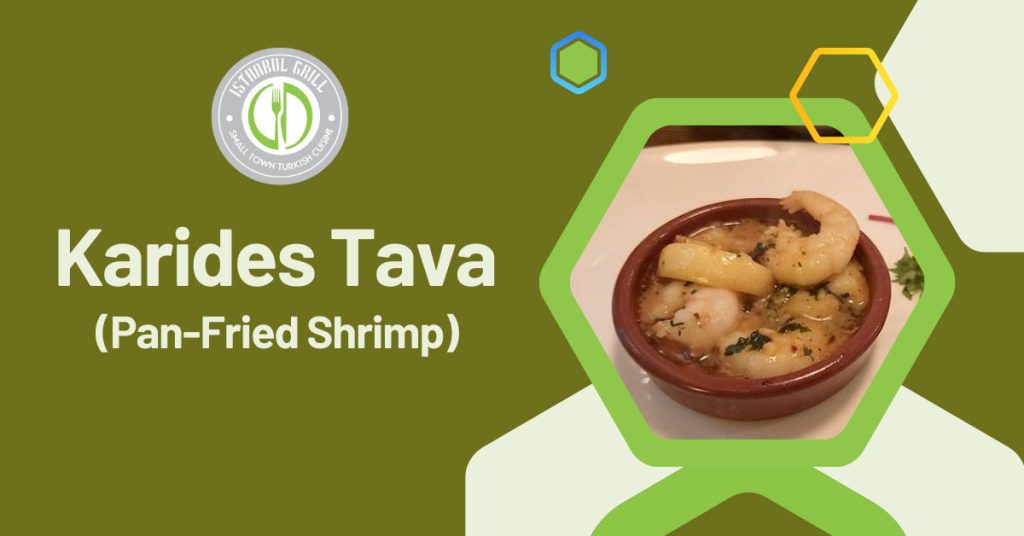
You can prepare Karides Tava very easily with basic ingredients, which presents the sweetness of shrimp perfectly. Dust the shrimp very lightly in flour and rapidly sauté them in a very hot pan until they are a rich golden brown on the outside and moist and succulent on the inside. People usually consume Karides Tava with a touch of lemon juice and optionally, some tarator sauce. You can prepare it as an appetizer or a light meal. This dish is a perfect illustration of the Turkish seafood dishes trends typical for Turkish cuisine, with the focus laid on the use of fresh products and minimalistic cooking.
Conclusion
Seafood is indeed a part of Turkey’s coastal cuisine and a testimony to the versatility Turkey has in using its seas as a kitchen to prepare delicious cuisines for consumption. The classic Balık Ekmek, a piece of fried fish sandwiched between two pieces of bread, is another version that can be considered easy to make, and the delicious Karides Güveç, a shrimp casserole, is utterly delicious. It’s clear that every dish represents history, every dish is related to the traditions and culture and relation to the sea. It matters not whether you have been an aficionado of seafood or a neophyte to the practice of fish and other seafood, Turkey is one country that will not fail to satisfy one’s palate as far as seafood is concerned.




